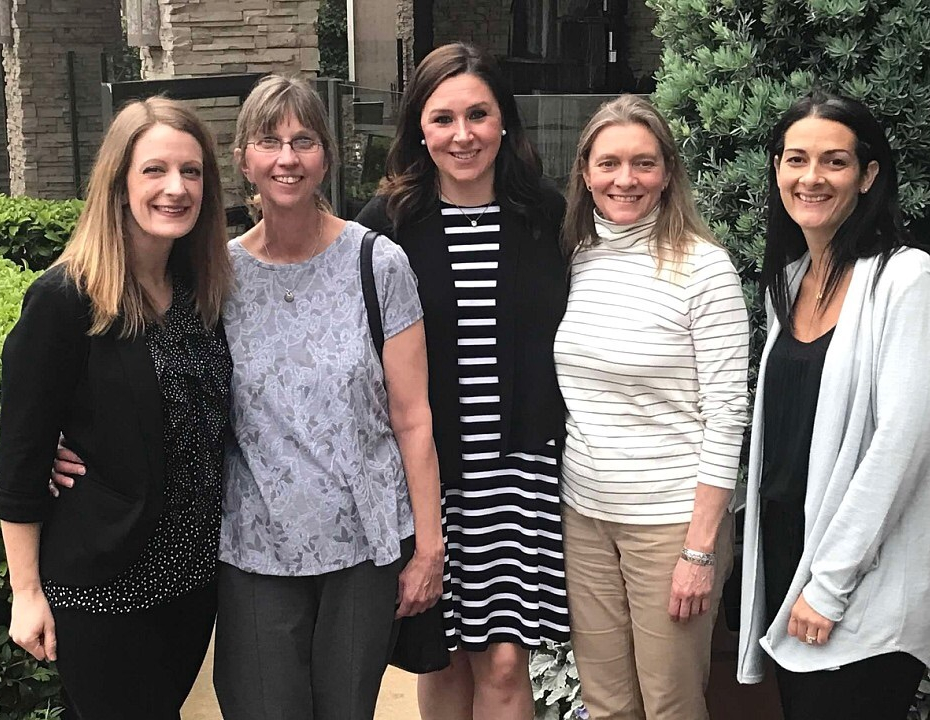Guest post by Mary Kate Locke, director of child and family development at Family & Children’s Agency, a partner of Norwalk ACTS of Norwalk, Conn.
At Family & Children’s Agency, we are excited to participate in the StriveTogether Prenatal to Age 3 Impact and Improvement Network through our work with Norwalk ACTS, the local cradle-to-career partnership in our community. Our ongoing work with Norwalk ACTS and other community partners is focused on creating better outcomes for Norwalk’s children. Now, we have embarked on accelerating our journey together, focusing on children from birth to age 3 in home-visiting programs.
 Ensuring our kids enter kindergarten ready to learn is critical. In 2013, the Norwalk community began focusing on this priority when a four-year grant from the Grossman Family Foundation launched the Early Childhood Development Initiative, an innovative state and local collaborative embedded in Norwalk ACTS. Last year, this collaborative received a new five-year grant from the foundation, with a clear charge: Develop a system for screening, tracking and promoting young children’s development to create the best start possible for all kids in our community. And do so using the Ages and Stages Questionnaire, which provides reliable, accurate development and social-emotional learning screening for children between birth and age 6.
Ensuring our kids enter kindergarten ready to learn is critical. In 2013, the Norwalk community began focusing on this priority when a four-year grant from the Grossman Family Foundation launched the Early Childhood Development Initiative, an innovative state and local collaborative embedded in Norwalk ACTS. Last year, this collaborative received a new five-year grant from the foundation, with a clear charge: Develop a system for screening, tracking and promoting young children’s development to create the best start possible for all kids in our community. And do so using the Ages and Stages Questionnaire, which provides reliable, accurate development and social-emotional learning screening for children between birth and age 6.
As we assembled the Norwalk team for the impact and improvement network, we carefully chose partners who are most closely connected to our target population. We also chose partners familiar with the administration of the Ages and Stages Questionnaire. Our team includes representatives from United Way of Connecticut Child Development Infoline and the University of Hartford’s Center for Social Research, our Norwalk Ages and Stages Questionnaire community liaison, and leaders of Norwalk’s home-visiting programs at Family & Children’s Agency and the Child Guidance Center of Mid-Fairfield County.
In our initial learning sessions for the impact and improvement network, we were inspired by and truly in awe of how StriveTogether’s collaborative continuous improvement methodology would become our new compass, helping us navigate and arrive at a more defined and systematic way to reach our project goal. We are striving to increase the percentage of children from birth to age 3 in home-visiting programs who are on track developmentally or show a reduction in potential or strong risk for delay.
At our third learning session, which took place in Chicago, the anticipation and readiness to start multiplied as we heard updates from each team member from the six communities represented in the room. For our team, beginning the day with a data walk helped us see the focus and progress of other communities and think more deeply about our own work, particularly around home visiting and the Ages and Stages Questionnaire. Below are some of the insights we put into practice through this reflection:
 Narrow a project’s focus. Our target remained the same from learning session one: Increase the percentage of children in home-visiting programs from birth to age 3 who are developmentally on track. After the third lesson, however, we narrowed our focus to one home-visiting program, Nurturing Families Network. This program has seasoned staff as well as existing structures around regular reflective supervision and completing the Ages and Stages Questionnaire at every interval. After focusing on this program, we plan to expand our work across more home-visiting models.
Narrow a project’s focus. Our target remained the same from learning session one: Increase the percentage of children in home-visiting programs from birth to age 3 who are developmentally on track. After the third lesson, however, we narrowed our focus to one home-visiting program, Nurturing Families Network. This program has seasoned staff as well as existing structures around regular reflective supervision and completing the Ages and Stages Questionnaire at every interval. After focusing on this program, we plan to expand our work across more home-visiting models.
Identify key factors and strategies. In addition to sharpening our focus, we identified factors and strategies and selected effective performance measures to determine if we are affecting the change we want to see in our target population. We identified that there is no common approach or common language for presenting the Ages and Stages Questionnaire or using it to partner with parents. Our updated strategies include providing instruction and support for caregivers to complete the questionnaire, rather than home visitors taking the lead. We also identified the need to shift the way the questionnaire is described, describing it as a tool to see how your child is growing and developing instead of a screener for developmental delay.
Leverage others’ expertise. It is hard to capture the true value of having time over a two-day period to work together to advance our project, with hands-on support from Strive Together as well as the National Institute of Children’s Health Quality (NICHQ) and Improvement Assurance Group. Their mentoring and coaching at the learning session solidified how we are tracking data and refined our strategies for our upcoming plan-do-study-act (PDSA) cycle. In addition, our NICHQ colleagues reinforced that examining similar practices around Ages and Stages Questionnaire administration across different home-visiting models is one of the national focuses within home visiting. We look forward to more time and opportunities to work with our StriveTogether and NICHQ colleagues, whose expertise in the Ages and Stages Questionnaire will be a support to our community work.
 Take time to develop relationships. One of our biggest takeaways from Chicago’s learning session is the importance of relationships. As a team, our ability to trust one another and value each person’s expertise is vital to creating better outcomes for children in our community. If we want children in our home-visiting programs to reach their greatest potential, success begins with the relationship that home visitors have with families. This relationship includes how home visitors educate parents and guide them through the completion of each Ages and Stages Questionnaire and ongoing activities that support child development. Finally, our work involves helping to build healthy attachments between parents and their babies from day one. These strong relationships allow parents to help their children reach each developmental milestone.
Take time to develop relationships. One of our biggest takeaways from Chicago’s learning session is the importance of relationships. As a team, our ability to trust one another and value each person’s expertise is vital to creating better outcomes for children in our community. If we want children in our home-visiting programs to reach their greatest potential, success begins with the relationship that home visitors have with families. This relationship includes how home visitors educate parents and guide them through the completion of each Ages and Stages Questionnaire and ongoing activities that support child development. Finally, our work involves helping to build healthy attachments between parents and their babies from day one. These strong relationships allow parents to help their children reach each developmental milestone.
Focus on outcomes, not outputs. In Norwalk, we are thrilled to move from outputs to outcomes for our prenatal-to-age-3 population. Instead of simply ensuring children receive developmental screenings, we are moving to screening children, applying tiered interventions and following their progress to ensure that they are on track developmentally or show a reduction in risk for delay. Tiered interventions are designed to provide home visitors with tools and protocols to engage parents in their child’s development, promoting healthy growth and ensuring that children do not fall through the cracks. For example, if a child is at risk for a developmental delay, home visitors teach the caregiver what to look for in their child’s development.
Through this process, we are contributing to our community-level outcome that all children in Norwalk enter kindergarten ready to learn. As we embark on our first plan-do-study-act (PDSA) cycle that we created in learning session three, we look forward to engaging other community partners in our work and all that is to come in upcoming learning sessions!
— Norwalk ACTS is a member of the StriveTogether Cradle to Career Network and one of six community partnerships participating in the StriveTogether Prenatal to Age 3 Impact and Improvement Network, done in partnership with the National Institute for Children’s Health Quality.






This is excellent! It is so wonderful to have an example of parent engagement in such an authentic and meaningful way, by promoting the self-efficacy and supporting their initiative to administer the ASQ themselves. This is a very exciting direction to take!
Great work. What are you using to track your ASQs and the results?
A big thank you to Mary Kate Locke and the team at FCA. for framing this initiative and providing an update on key factors and strategies that we can employ with the work we do with our client population.